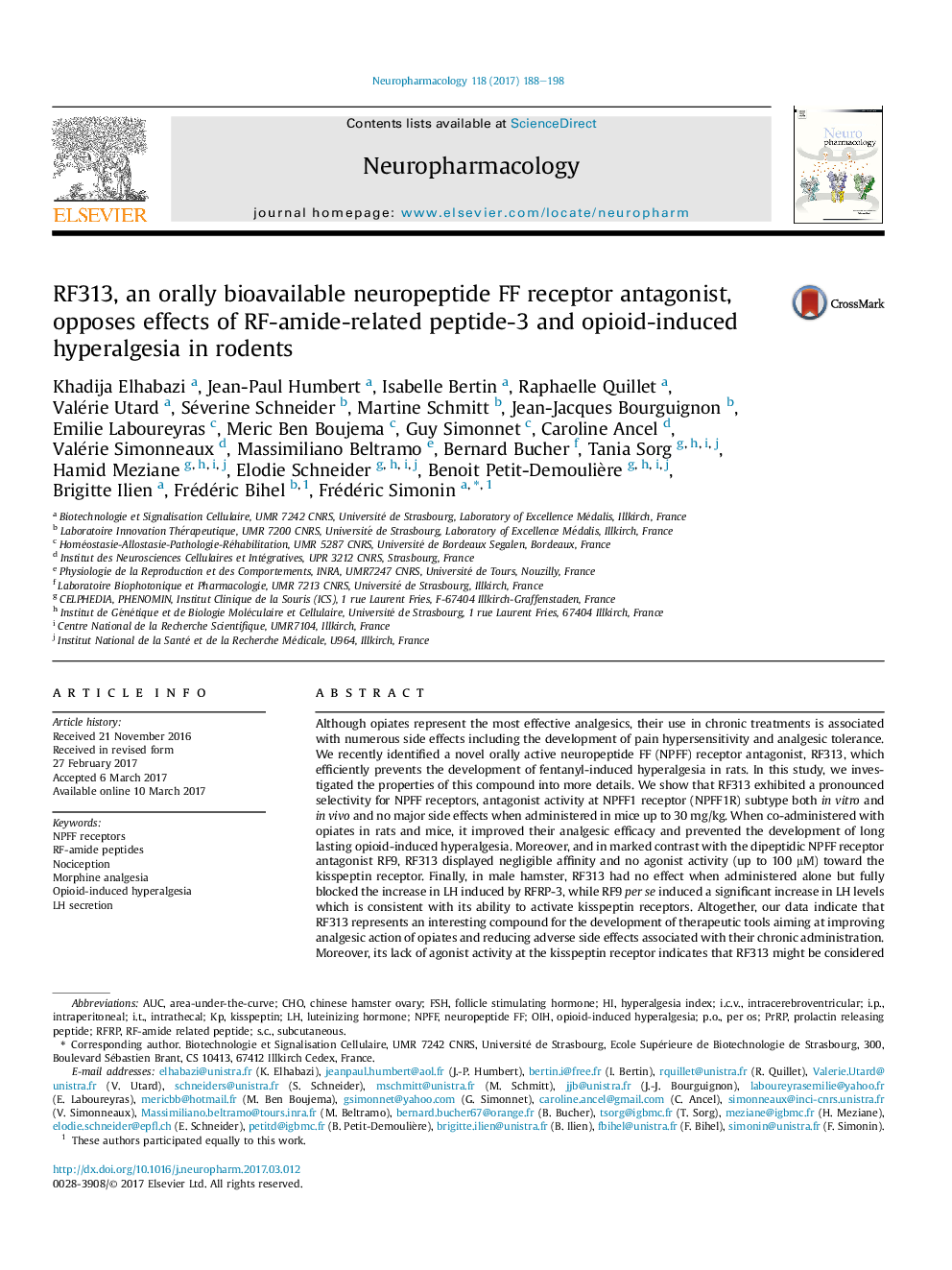| Article ID | Journal | Published Year | Pages | File Type |
|---|---|---|---|---|
| 5549026 | Neuropharmacology | 2017 | 11 Pages |
â¢RF313 displays antagonist activity at NPFF1 receptor both in vitro and in vivo.â¢RF313 potentiates fentanyl and morphine analgesia by subcutaneous and oral routes.â¢RF313 blocks fentanyl hyperalgesia and attenuates morphine hyperalgesia and tolerance.â¢RF313 prevents the release of LH induced by RFRP-3 in hamster.
Although opiates represent the most effective analgesics, their use in chronic treatments is associated with numerous side effects including the development of pain hypersensitivity and analgesic tolerance. We recently identified a novel orally active neuropeptide FF (NPFF) receptor antagonist, RF313, which efficiently prevents the development of fentanyl-induced hyperalgesia in rats. In this study, we investigated the properties of this compound into more details. We show that RF313 exhibited a pronounced selectivity for NPFF receptors, antagonist activity at NPFF1 receptor (NPFF1R) subtype both in vitro and in vivo and no major side effects when administered in mice up to 30 mg/kg. When co-administered with opiates in rats and mice, it improved their analgesic efficacy and prevented the development of long lasting opioid-induced hyperalgesia. Moreover, and in marked contrast with the dipeptidic NPFF receptor antagonist RF9, RF313 displayed negligible affinity and no agonist activity (up to 100 μM) toward the kisspeptin receptor. Finally, in male hamster, RF313 had no effect when administered alone but fully blocked the increase in LH induced by RFRP-3, while RF9 per se induced a significant increase in LH levels which is consistent with its ability to activate kisspeptin receptors. Altogether, our data indicate that RF313 represents an interesting compound for the development of therapeutic tools aiming at improving analgesic action of opiates and reducing adverse side effects associated with their chronic administration. Moreover, its lack of agonist activity at the kisspeptin receptor indicates that RF313 might be considered a better pharmacological tool, when compared to RF9, to examine the regulatory roles of RF-amide-related peptides and NPFF1R in reproduction.
